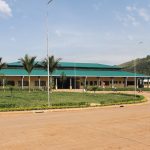Infrastructure spend and the need to regain competitiveness

There are various regional examples of how spending on infrastructure – such as roads and rail – can boost a country’s competitive advantage.
In the previous column, I discussed how when governments push back spending on public investment projects to fund a short-term deficit, this limits the expansionary capacity of the heavy sectors within the economy – and, by extension, the demand for freight.
Delaying the infrastructure replacement cycle means that productive use declines over time.
This results in lower tax revenue, resulting in less money for the government to spend.
Delaying investment can affect expected future capacity. Often the knock-on effect of this is that capital projects are at risk if the economy suffers some sort of external shock.
The South African economy was able to stave off a complete downgrade at the beginning of 2018 with the decision by Moody’s to upgrade our outlook to stable. However, experience from the region has shown that external shocks can derail any future plans.
One good example of this is Mozambique. On the back of the tuna bond scandal, Mozambique has faced a situation where spending and borrowing is contained under the International Monetary Fund (IMF) assistance.
This means that investment in critical infrastructure is constrained by a limited ability of government to borrow, and a public sector that is too small to fund the scale of roads and transport infrastructure required to complement manufacturing output. In fact, recent reports suggest that the country may be able to repay interest on loans only once the gas projects come online.
Another example is an economy’s reliance on raw commodities. In the case of Botswana and Namibia, the over-reliance on revenue generated from diamonds and other heavy mining commodities means that the size of the fiscus is often dependent on commodity prices.
In a price downturn, the government has limited space to manoeuvre and continue spending.
Experience has shown how manufacturing, and, by extension, transport performance, can be hindered by lack of transportation networks.
The bridge border crossing at Kazungula, designed to replace the current ferry model and scheduled to be completed within the first part of 2018, is expected to reduce transportation times significantly. Without this investment, delays were commonplace and expansion in productive sectors of the economy would have been impossible.
It, therefore, remains critical that the government prioritises spending on road and rail networks to ensure that they are sufficiently well capitalised to provide the transport sector with capacity to expand.
In a stagnant economic environment, such as the one seen in 2017, and with limited fiscal room to manoeuvre, it is critical that the government is able to continue spending on infrastructure. It can then ensure that the economy has the transport capacity to meet demand when a recovery takes effect.
Unfortunately, during the past few years the opposite has occurred, which is why we find ourselves at risk of losing our manufacturing competitive advantage.
Published by
Sam Rolland
focusmagsa




